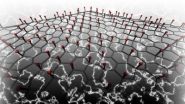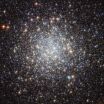(Press-News.org) Warnings are in effect and evacuations have taken place along the northern Australia coast near Port Hedland. NASA's Aqua satellite passed over Lau as it strengthened into a Cyclone today, March 15, 2012.
On March 15, 2012 at 02:31 UTC, the Moderate Resolution Imaging Spectroradiometer (MODIS) instrument onboard NASA's Aqua satellite captured a visible image of Cyclone Lua when it was about 400 nautical miles northwest of Port Hedland, Australia. In the image, the bulk of clouds and showers appear to be over the northern and western quadrants of the storm. Satellite imagery shows that Cyclone Lua is consolidating and has tightly-curved bands of thunderstorms wrapping into its center.
A Cyclone warning is now in effect for coastal areas from Bidyadanga to Mardie, including Port Hedland, Karratha and Dampier. A Cyclone Watch has been posted for coastal areas from Cape Leveque to Bidyadanga including Broome, and the eastern inland Pilbara including Newman and Telfer. The Australian Bureau of Meteorology is issuing updates every three hours. To see the updates, visit: http://www.bom.gov.au/cyclone/.
Bloomberg Business reports the Chevron Corporation is evacuating workers along Australia's northwest coast from gas projects and are moving iron ore ships out to sea. Fox Business noted today, March 15, that Port Hedland has begun evacuating personnel and is preparing to shut down as Lua heads toward the Pilbara coast.
On March 15, 2012 at 0900 UTC (5 a.m. EST) Tropical cyclone Lua's maximum sustained winds had increased to 65 knots (75 mph/120 kph). It was centered near 15.7 South latitude and 113.0 East longitude, about 435 miles northwest of Port Hedland, Australia. It is generating very rough seas as it moves slowly toward the coast.
Cyclone Lua was moving to the west at 5 knots (5.7 mph/9.2 kph) and is expected to move toward the southeast in the next day. Forecasters at the Joint Typhoon Warning Center explained how Lua's direction will change later on March 15, "Lua is located within a competing steering environment but is expected to track east-southeastward to southeastward under the steering influence of the near equatorial ridge (elongated area of high pressure) as the subtropical ridge, positioned to the southwest, weakens and retrogrades over the next 24 hours."
Cyclone Lua is expected to continue strengthening to as much as 95 knots (109 mph/ 176 kph) before making landfall in the vicinity of Port Hedland on March 17 around mid-day local time. The Australian Bureau of Meteorology issued a statement on March 15 around 12 p.m. EST (1:30 a.m. March 16, Darwin local time) that noted "[Cyclone Lua] is expected to accelerate towards the east Pilbara coast during Friday. Lua is expected to intensify into a severe tropical cyclone overnight and remain severe through to landfall."
As Lua nears, residents should make preparations for heavy rainfall, cyclone-force winds, and expect very rough surf along the east Pilbara and west Kimberley coastlines.
INFORMATION:
Now a cyclone, NASA sees Lua closer to a landfall in northern Australia
2012-03-19
ELSE PRESS RELEASES FROM THIS DATE:
White rice increases risk of Type 2 diabetes
2012-03-19
The risk of type 2 diabetes is significantly increased if white rice is eaten regularly, claims a study published today on bmj.com.
The authors from the Harvard School of Public Health look at previous studies and evidence of the association between eating white rice and the risk of type 2 diabetes. Their study seeks to determine whether this risk is dependent on the amount of rice consumed and if the association is stronger for the Asian population, who tend to eat more white rice than the Western world.
The authors analysed the results of four studies: two in Asian ...
NIH brain imaging study finds evidence of basis for caregiving impulse
2012-03-19
Distinct patterns of activity—which may indicate a predisposition to care for infants-- appear in the brains of adults who view an image of an infant face—even when the child is not theirs, according to a study by researchers at the National Institutes of Health and in Germany, Italy, and Japan.
Seeing images of infant faces appeared to activate in the adult's brains circuits that reflect preparation for movement and speech as well as feelings of reward.
The findings raise the possibility that studying this activity will yield insights into care giving behavior, but ...
Straintronics: Engineers create piezoelectric graphene
2012-03-19
In what became known as the 'Scotch tape technique," researchers first extracted graphene with a piece of adhesive in 2004. Graphene is a single layer of carbon atoms arranged in a honeycomb, hexagonal pattern. It looks like chicken wire.
Graphene is a wonder material. It is one-hundred-times better at conducting electricity than silicon. It is stronger than diamond. And, at just one atom thick, it is so thin as to be essentially a two-dimensional material. Such promising physics have made graphene the most studied substance of the last decade, particularly in nanotechnology. ...
Inflammatory biomarkers improve the clinical prediction of mortality in COPD
2012-03-19
The addition of changes in inflammatory biomarkers to established clinical variables improves the prediction of mortality in patients with chronic obstructive pulmonary disease (COPD), according to a new study.
"COPD is characterized by low-grade inflammation, so we hypothesized that the addition of inflammatory biomarkers to established predictive factors would improve the prediction of mortality," said lead author Bartolome Celli, lecturer in medicine at Harvard Medical School and member of the Pulmonary and Critical Care Division of Brigham and Women's Hospital in ...
Art improves stroke survivors' quality of life
2012-03-19
Copenhagen, 16 March 2012: Stroke survivors who like art have a significantly higher quality of life than those who do not, according to new research. Patients who appreciated music, painting and theatre recovered better from their stroke than patients who did not.
The research was presented at the 12th Annual Spring Meeting on Cardiovascular Nursing, 16-17 March, in Copenhagen, Denmark.
Stroke is the third cause of death in the western world and the first cause of disability in adults. More and more older people are having strokes and undergoing recovery. "We know ...
Depression increases death risk in coronary stent patients
2012-03-19
Copenhagen, 16 March 2012: Depression increases the risk of death in patients who have a coronary stent implanted. After seven years of follow up, depressed patients were 1.5 times more likely to have died than non-depressed patients. The findings were independent of age, gender, clinical characteristics, anxiety and the distressed (Type D) personality.
The research was presented at the 12th Annual Spring Meeting on Cardiovascular Nursing, 16-17 March, in Copenhagen, Denmark.
Depression has been associated with poor outcomes in coronary artery disease but previous ...
Poor dental hygiene puts congenital heart disease patients at risk of further heart damage
2012-03-19
Copenhagen, 16 March 2012: Poor dental hygiene behaviours in patients with congenital heart disease are increasing their risk of endocarditis. Teens with congenital heart disease floss, brush and visit the dentist less than their peers. But they have healthier behaviours when it comes to alcohol, cigarettes and illicit drugs. Adults with single ventricle physiology (a type of congenital heart disease) also have poorer dental hygiene practices than their peers despite having better health behaviours overall.
The findings were presented in two studies at the 12th Annual ...
Glittering jewels of Messier 9
2012-03-19
Messier 9, pictured here, is a globular cluster, a roughly spherical swarm of stars that lies around 25 000 light-years from Earth, near the centre of the Milky Way, so close that the gravitational forces from the galactic centre pull it slightly out of shape.
Globular clusters are thought to harbour some of the oldest stars in our galaxy, born when the Universe was just a small fraction of its current age. As well as being far older than the Sun — around twice its age — the stars of Messier 9 also have a markedly different composition, and are enriched with far fewer ...
'Gravity is climate' - 10 years of climate research satellites GRACE
2012-03-19
For the first time, the melting of glaciers in Greenland could now be measured with high accuracy from space. Just in time for the tenth anniversary of the twin satellites GRACE (Gravity Recovery and Climate Experiment) a sharp image has surface, which also renders the spatial distribution of the glacial melt more precisely. The Greenland ice shield had to cope with up to 240 gigatons of mass loss between 2002 and 2011. This corresponds to a sea level rise of about 0.7 mm per year. These statements were made possible by the high-precision measurements of the GRACE mission, ...
Exposure to antibiotics linked to severity of allergic asthma: UBC research
2012-03-19
Widely used antibiotics may increase incidence and severity of allergic asthma in early life, according to a University of British Columbia study.
The study, published today in the journal EMBO reports, shows that certain antibiotics that affect intestinal bacteria also had a profound impact on allergic asthma.
"It has long been suspected that kids exposed to more antibiotics – like those in developed countries – are more prone to allergic asthma," says the study's author, UBC microbiologist Brett Finlay. "Our study is the first experimental proof that shows how."
Finlay's ...


